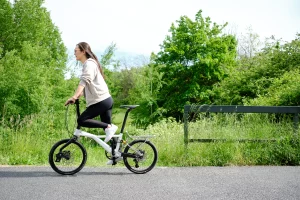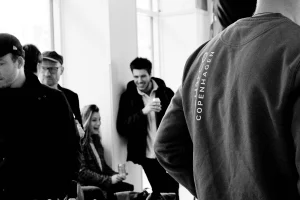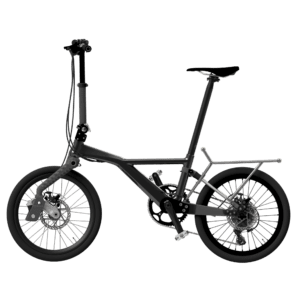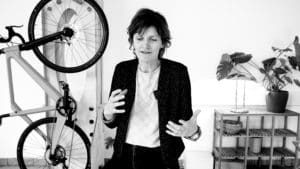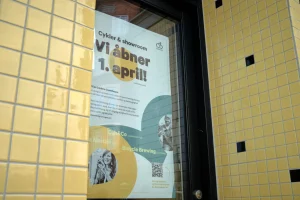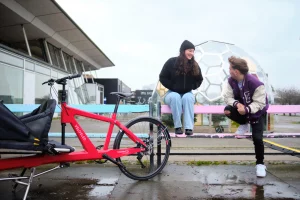A following breeze - understanding
e-bikes
19.02.2024
Anyone who cycles regularly has experienced the feeling of soaring. Soaring on a bike is the sensation that all is as it should be. You feel like you are in great form and the bike accelerates almost effortlessly. You’re ahead of the game and you’re feeling good. Unfortunately, this is sometimes followed by a bit of a downer when on your return trip you discover that the wind is against you and your legs and bicycle are both slower and heavier than on the trip out.
The exhausting feeling of riding against the wind always makes me think of a little piece of Danish political history; in 1994 there was a Danish comedian from Aarhus (yes, he was originally from the Faroe Islands but he was elected in Aarhus) who among his many practical political agendas like better weather also advocated for a following wind on all cycling paths – no wonder he was elected. Unfortunately, Jacob Haugaard only served one term and never managed to implement these bicycle-friendly policies.
Many years later I had a daily commute of around 18 km each way and despite being in my late forties at the time I felt exceptionally fit with my daily pedal routine. There was however a period where I was passed by an elderly woman. Day after day she rode past me on our common road into Copenhagen, and day after day I marvelled at how she never seemed to get tired or slow down. It was first after several months that it dawned on me that she was riding on a pedelec, e-bike. She had an electron wind at her back. My first reaction was one of recomposing my otherwise shattered self-esteem, this was how an elderly woman managed to zip past me day after day! Finally, at some point, I began to realise that this made great sense. Her e-bike empowered her to tackle an almost 20 km commute into and out of town, rain or shine; she wasn’t cheating she was embracing a compromise that made commuting a considerable distance realistic.
I will be the first to admit that I do not have much experience with e-bikes. I design them, test them and we sell them but most of my private time on a bike is spent burning calories I ate and not those from the wall socket. Part of this may be that I am not riding 40 km/day any longer and I just don’t need the assistance of a motor. A second reason may be that I probably need all the exercise I can get.
This brings me to another story. A couple of years ago I was asked if we could provide a couple of cargo bikes and a couple of riders to transport an art exhibit from Horsens in Jutland to Ebeltoft with a detour to Ry all in all just under 130 km. I had plans so we arranged for a friend and an employee to do the pedalling but at the very last minute, one of our two riders fell sick and couldn’t make the trip. I was in poor form and had not cycled more than a few kilometres/day for several months, so I was quite concerned that I wouldn’t be able to make the trip. Nonetheless, we had promised to do this so I showed up with two e-bikes and 3 batteries for the two of us. We loaded the bikes with 60 to 70 kilos of art each in mid-afternoon and rode off into the spring chill. We made the first 70 km to Aarhus by nightfall and slept at my father-in-law’s where we got up in the morning and ate up the remaining 60km to Ebeltoft. I had been quite concerned about not having enough battery power to complete the trip and to be honest about being too sore to ride the second day but the truth of the matter is that even though I had conserved power by keeping the motor on its lowest setting I wasn’t sore or overly tired the second day. We discovered that it was quite easy to keep the bikes at 25 or over because even though the pedelec assist cuts out at 25 it helps make it easier to keep the bike going at over 25. We had a great weekend and despite being a bit of a show for the organisers of the art exhibit it was a wonderful experience. I am convinced it would have been overwhelming had I not had the wind behind me thanks to the pedelec assist.
I still don’t ride much electric but this summer I had yet another experience while riding through the Bohemian Hills south of Prague. I was struggling up and down the rather steep slopes even if they weren’t very long. At some point, my companion and I stopped to pick some cherries from a cherry tree along the road. It was a dirt roadside with an idyllic view of the Bohemian countryside, but my thoughts were clouded by the idea of struggling on another 60 kilometres. Suddenly, as though out of nowhere an elderly Swiss couple came rolling along the road seemingly unaffected by the effort of the day. When I asked them how far they had ridden they told me it was a short day. They had only ridden 70 km and they expected to camp in 25 km or so. Their bikes were loaded like pack horses with tents, camping chairs, extra water bottles and of course an extra battery. They managed to use the little bit of extra help they received from their pedelecs to increase their range and take the edge off of the strain required to negotiate the hills. They seemed to have no trouble charging their batteries at roadside cafes and camping grounds.
A few days later I met another German couple in their 70s riding from Regensburg to Vienna along the Donau on Pedelec e-bikes fully packed. This is a relatively flat route but with the help of their pedelecs, they managed to turn their +430 km trip into a 5-day summer excursion.
And you know what? It’s not just about seasoned cyclists or adventurers on epic tours. E-bikes can be likened to a gateway drug to a more bike-friendly world. They make cycling a part of everyday life, not just for the enthusiasts but for anyone looking for a healthier, more convenient way to get around. With an e-bike, suddenly that daunting 15-kilometre commute doesn’t seem so bad. You can arrive at work feeling refreshed instead of exhausted, ready to tackle the day ahead. Cycling is not just about the physical benefits; it’s about reclaiming time that would have been lost sitting in traffic or waiting for public transportation. Not to mention, you’re doing your part to reduce congestion and lower emissions — talk about a win-win! E-bikes are helping to revolutionise urban lifestyles, making it easier than ever to run errands, meet friends, or just explore — all without the hassle of finding parking or worrying about gridlock. They’re opening up new possibilities for recreation and adventure, whether it’s a leisurely ride along a scenic bike path or a spontaneous trip to that trendy café across town. So, while they may give a helping hand to those tackling long distances or steep hills, they’re also levelling the playing field, making cycling accessible and enjoyable for everyone.
These encounters with pedelecs have reshaped my understanding of cycling. From the initial blow to my ego to the realisation of the practicality and inclusivity of e-bikes. I’ve come to see them not as a crutch but as a tool for empowerment. As I continue my cycling adventures, I carry with me the lessons learned—the fusion of tradition and innovation, the importance of adaptability, and the joy found in the journey is always better to get out for a ride than it is to stay at home wishing you could get out there. I have often joked that I am too old for an electric bike, pointing out that I have reached an age where I need to make a continual effort to stay in shape; be that as it may, I am aware that a day may come when I choose to subsidise my efforts with a motor and re-empower myself to make the unachievable both achievable and fun again. So, whether battling headwinds or conquering hills, I embrace each pedal stroke with newfound appreciation, knowing that with the wind at my back, anything is possible.
